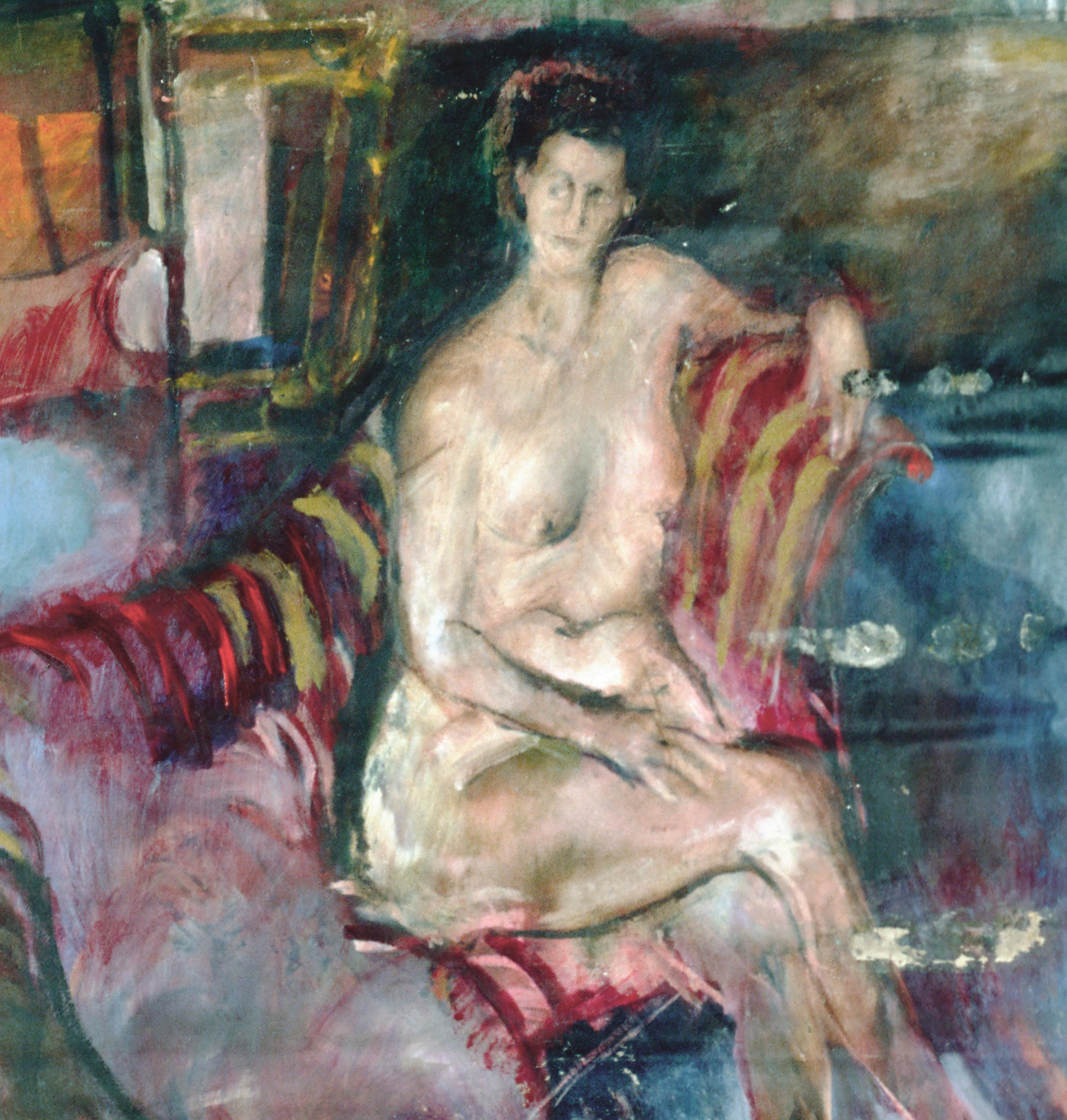
2 minute read
Director’s Statement
Wolf Kahn, detail of Self-Portrait, 1959. Oil on canvas, 42 x 40 in. (106.7 x 101.6 cm). Wolf Kahn and Emily Mason.
IIn 2014, Wolf Kahn stood at the podium in the Brattleboro Museum & Art Center, scanned the standing-room-only crowd assembled to hear his lecture titled Control and Letting Go, and pronounced, “Well, I guess I’m big in Brattleboro.” By that time, Wolf had been spending summers in our southern Vermont town for nearly 50 years. He and his wife, Emily Mason, were beloved members of our tight-knit arts community. Many in the audience that evening knew Wolf well, and we understood that his opening remark was less aggrandizing than self-deprecating.
At 87, Wolf anguished over the fact that his place in the history of American art had not been clearly explicated. Although he obviously enjoyed the adulation he received in Brattleboro, he chafed at being called a Vermont artist. And he was ambivalent, at best, about being identified as a landscape painter or even a colorist. For someone so steeped in art history, so thoughtful about the influences of others on his work, the lack of scholarly clarity surrounding his relationships to his predecessors and peers gnawed at him.
Sometime soon after that lecture, I was discussing Wolf’s plight with Stephen Hannock, who recounted that he had recently had similar conversations about the legacies of Robert De Niro, Sr., Al Kresch, and Paul Resika. It quickly became clear to us that there was a story to be told here—of a group of New York artists who came of age in the 1950s, absorbed the lessons of Abstract Expressionism, but never strayed from figurative painting, at least not for long. No sooner had the concept begun to materialize than it occurred to us that the incisive scholar and curator Karen Wilkin should be the one to tell that story. We were thrilled when she agreed to do so and could not be more pleased with how the exhibition has come to fruition.
As fate would have it, Wolf Kahn died six months before the exhibition opened. He is, nonetheless, bigger than ever in Brattleboro, and all of us at the museum he helped bring into existence and nurtured until his final days are deeply gratified to have played a part in illuminating his legacy and those of the nine other remarkable artists featured in Figuration Never Died.
Danny Lichtenfeld, Director Brattleboro Museum & Art Center August, 2020








